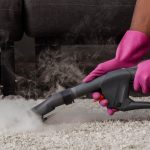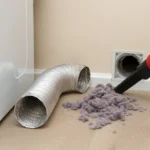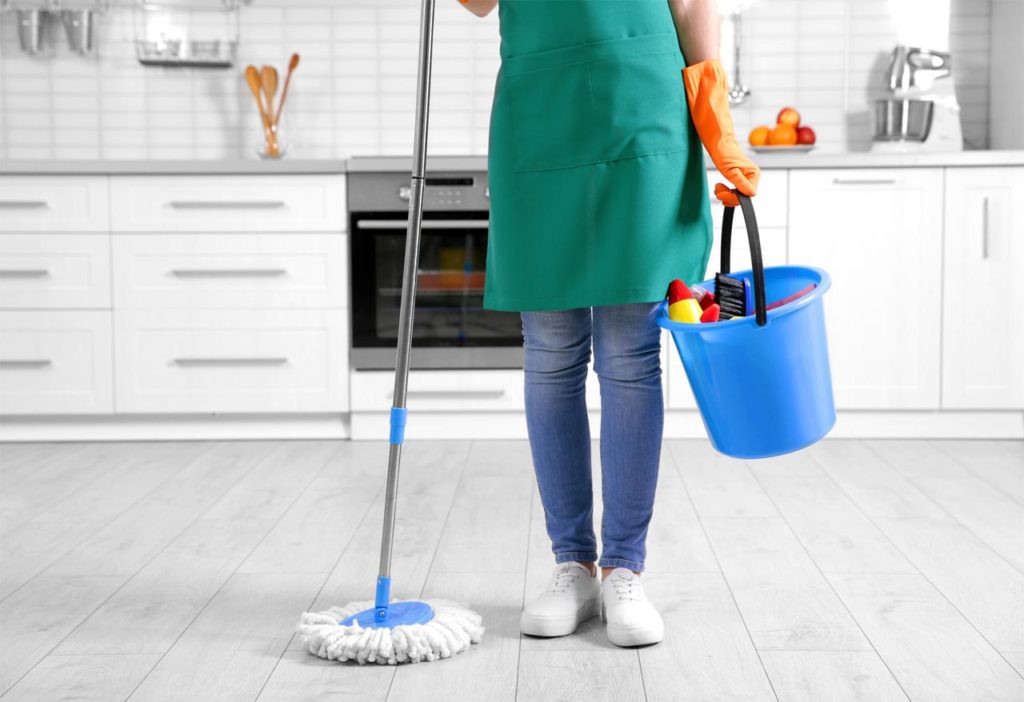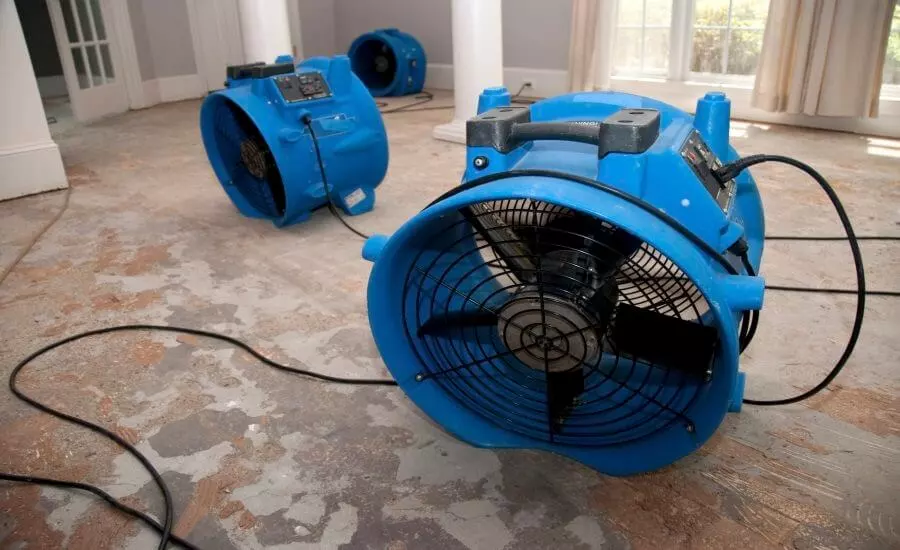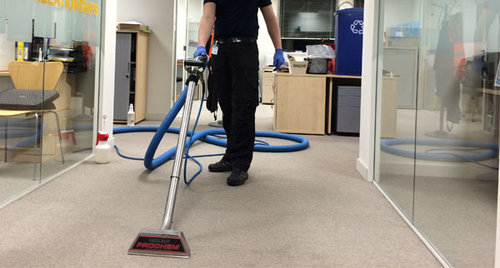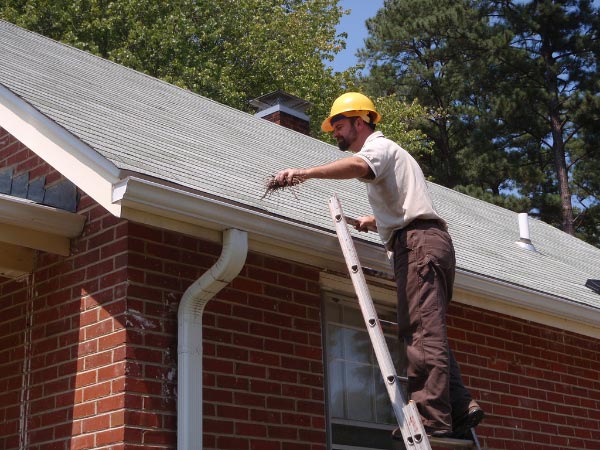Stains and Spills
Use a paper towel to blot, not wipe, a spill immediately after it happens because wiping spreads spills. Then, rinse the area a few times with mild soapy water. Finally, use a soft cloth to completely dry the area. If necessary, repeat these steps. Follow the instructions in the removing stains section if you cannot get rid of the stain.
Removing Stains
The solution to removing a stain lies in identifying its type. To determine this information, ask yourself about the location of the stain. Is it where you apply makeup, make food or water your plants? You should also consider the color and shape or pattern. The correct cleaning product can usually eliminate surface stains. However, you may need the help of a professional or poultice to take care of set-in stains. In the following instructions, you will learn more about common stains, using a poultice and choosing the right household chemical for a poultice.

Common Stain Types
BIOLOGICAL GROWTHS
(algae, fungi, lichens, mildew and moss).
Dilute one-half cup of ammonia, bleach or hydrogen peroxide with 1 gallon of water. Use this mixture to clean biological growths. Never combine ammonia and bleach as this makes a toxic gas!
EFFLORESCENCE
Efflorescence is a powdery white substance on a stone’s surface. This coating happens when water that contains mineral salts rises to the stone’s surface and evaporates, leaving behind the salts. In new stone installations, you can vacuum or dust mop efflorescence, making several passes over it. Refrain from using water as it is an extremely temporary fix. For persistent efflorescence, the installer can help you determine the powder’s cause and most effective removal method.
ETCHING
When acid sits on a stone, etch marks can appear. Depending on the acidic material, staining may also occur. After removing the stain, use clear water to wet the stone’s surface and sprinkle marble polishing powder on the affected area. With a buffing pad on a drill set to low speed, rub the polishing powder onto the area. You may also use a damp cloth. Buff the etch mark until the mark is gone and the marble shines. If you cannot remove the etch mark, contact a stone restorer or dealer to re-polish or refinish the stone.
INK STAINS
(inks and markers)
Clean ink stains from light colored stones with hydrogen peroxide or bleach. Use acetone or lacquer thinner for dark stones.
METAL STAINS
(patina, rust and tarnish)
Rust stains on iron are brown and similar in shape to the offending item such as a bolt, can or nail. The patina on copper and the tarnish on bronze are a murky brown and greenish-blue color, respectively. These metal stains are caused by a reaction to moisture on an embedded or nearby object, and you must use a poultice to remove them. Note that ingrained rust is hard to remove, and the damage may be permanent.
NICKS AND SCRATCHES
Dry #0000 steel wool can buff out superficial scratches. You may need to hire a professional to repair and re-polish surfaces with nicks and deep scratches.
OIL-BASED STAINS
(cooking oil, cosmetics, grease, milk, and tar)
Oil-based stains darken stones, and you must dissolve these stains with the gentle application of chemicals, so you can rinse away the culprit. Appropriate chemicals include a bleach-infused liquid cleaner, acetone, ammonia, household detergent or mineral spirits. Never mix any of these chemicals with another chemical.
ORGANIC STAINS
(bark, bird droppings, coffee, food, fruit, leaves, paper, tea, tobacco and urine)
Organic stains may be pinkish-brown in appearance, disappearing once you remove the stain’s source. For indoor cleaning, add several drops of ammonia to a 12 percent hydrogen peroxide solution. For outdoor cleaning, the rain and the sun should bleach away the stains as long as the source is gone.
PAINT STAINS
(acrylics and latex)
If the paint stain is small, you can carefully scrape it off with a razor blade or remove it with a lacquer thinner. To tackle larger, thicker paint stains, you should only use a commercial heavy-duty paint stripper. Since these commercial strippers contain lye or caustic soda, refrain from using flame tools and acids. Etching may occur after using a paint stripper, so you may need to have the stone’s surface re-polished. Work safely by flushing the area with water, following the manufacturer’s instructions, ventilating the room and wearing protective glasses and gloves. Only use plastic or wood scrapers to get rid of paint curdles and sludge. To clean oil-based paint stains, see the aforementioned oil-based stains section.
SMOKE AND FIRE DAMAGE
To restore fireplaces stained from smoke or fire damage back to their original appearance, an intensive cleaning session may be in order. Smoke removing agents can make the job easier.
WATER RINGS AND SPOTS
Buff hard water accumulation stains with dry #0000 steel wool.
Poultices
MATERIALS FOR POULTICES
Poultices are absorbent, thick pastes that draw out stains. They are made from chemicals or liquid cleaners combined with white absorbent materials. Diatomaceous earth, fuller’s earth, kaolin, powdered chalk, powdered whiting, talc or white molding plaster can be used to make poultices. About 1 pound of prepared poultice can cover approximately 1 square foot. Never use fuller’s earth or whiting with acids as this chemical reaction will render the poultice ineffective. You can also prepare poultices with white cotton balls, white gauze or white paper towels. If you opt to use white paper towels, make sure you soak the towels in the chemical of your choice without letting the liquid drip.
CREATING AND USING POULTICES
After preparing a poultice, wet the stain with distilled water. Using a non-metal spatula, you should spread the poultice over the stain, making the poultice’s thickness anywhere from one-fourth of an inch to one-half of an inch. The poultice should extend 1 inch past the stain’s edges. Then, cover the poultice with plastic, tape the edges and allow the poultice to sit for 24 hours to 48 hours. Next, remove the plastic, so the poultice can dry. Once the poultice is dry, use distilled water to rinse the area, buffing the spot dry with a cloth. You may need to repeat the poultice application steps up to five times. If the chemical etches the surface, use a felt or burlap buffing pad and polishing powder to buff the etched area. In some cases, a poultice cannot totally remove a stain.
Household Chemicals for Poultices
BIOLOGICAL STAINS
Use either diluted ammonia, bleach or hydrogen peroxide to make a poultice for removing biological stains. Combining ammonia and bleach will make noxious fumes, so you should only use one of these chemicals!
COPPER STAINS
Copper stains are hard to remove without the help of a professional. However, you can try to remove them on your own by making a poultice from ammonia and a powdered poultice material.
IRON STAINS
Like copper stains, rust stains are difficult to eliminate. You may be able to forego a professional’s assistance by using a poultice created from a commercial rust remover and diatomaceous earth.
OIL-BASED STAINS
An effective poultice for oil-based stains should contain either mineral spirits and a powdered poultice material or water and baking soda.
ORGANIC STAINS
To remove organic stains, make a poultice from a powdered poultice material and either acetone or 12 percent hydrogen peroxide.
Content provided by NASGranite.

My name is Author Name. I post about home improvement ideas and how to make your home look beautiful and liveable. I hope my posts will help you with your DIY projects!

